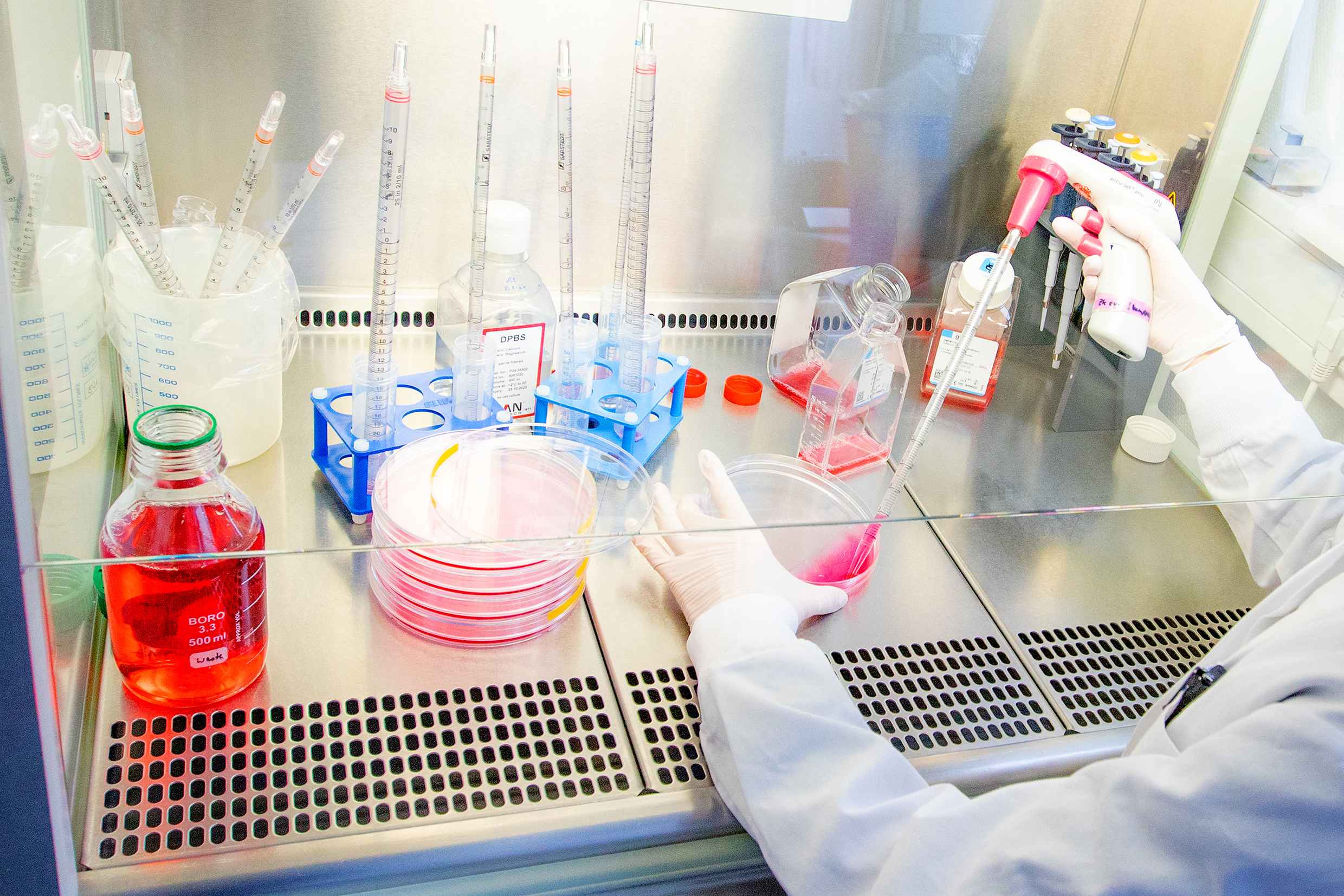MHH researcher is involved in two EU gene therapy projects and is developing new viral vectors for the safe and efficient transfer of curative genes.

New gene taxis are to bring healing genes safely and efficiently to their destination. Copyright: Karin Kaiser / MHH
Gene therapies are aimed at curing severe, barely treatable monogenetic diseases, i.e. those caused by a defect in a single gene. Hopes are correspondingly high. Some gene therapies have already been approved in Europe - for example for spinal muscular atrophy (SMA), a congenital disease of the motor neurones that leads to severe muscle weakness and muscle atrophy, among other things. Therapeutic genes are transported directly into the cell as a "drug" with the help of so-called viral vectors. Among the best-known representatives of these vectors, colloquially known as gene taxis, are the AAV vectors, which are derived from the so-called adeno-associated viruses (AAV). Professor Dr Hildegard Büning, Deputy Director of the Institute of Experimental Haematology at Hannover Medical School (MHH), is an internationally renowned expert in the development of AAV vectors for gene therapy. She is involved in two major European Union (EU) gene therapy research projects. The EU joint application AAVolution is concerned with improving gene therapy approaches for the liver. The joint project involving nine project partners is being funded with four million euros. Half a million of this will go to the MHH. The MAGIC project focuses on neuromuscular and muscular diseases, a group of diseases characterised by the progressive regression of muscle tissue. Fifteen international research groups are working together on the project. It is being supported by the EU with a total of six million euros. The MHH is receiving around one million euros of this.
Improving and stabilising gene transfer to the liver
Although AAV vectors are derived from viruses, they serve exclusively as a means of transport in gene therapy. With the viral envelope, the so-called capsid, they dock onto the body cell and channel their genetic cargo into the cell interior. There it is read and converted into the corresponding protein according to its blueprint. However, not all gene taxis reach their destination. Sometimes they unload their cargo in the wrong place because they also target other tissues in addition to the desired target organ. They can also be recognised as foreign by the immune system. "Around 70 per cent of the population have neutralising antibodies against some of the naturally occurring AAVs," says Professor Büning. "Their immune system would therefore intercept the corresponding viral vectors before they can introduce the therapeutic gene into the cell." By modifying the capsid, known as capsid engineering, the gene taxis can be given new properties. The researcher is using this strategy in both AAVolution and MAGIC to optimise the AAV vectors for their future role in gene therapy in humans.
Specifically, the researchers in the AAVolution project want to improve and stabilise gene transfer into the liver. To this end, they are looking for AAV variants in so-called capsid variant libraries that can efficiently deliver their cargo into the liver cells and also escape the neutralising antibodies. By increasing efficiency, they hope to reduce the number of gene taxis used per patient. Another problem with gene therapy in the liver is that this organ can regenerate, for which the liver cells divide. "With each division step, there are fewer vectors and therefore fewer therapeutic genes in the cells, because the introduced genetic material is not permanently incorporated into the DNA of the liver cell," explains Professor Büning. The researchers hope to prevent this undesirable loss by developing AAV vectors that multiply synchronously with the cell and thus counteract the dilution of the transgenes.
A navigation device for the gene taxis
The MAGIC project aims to develop novel, lifelike models that simulate the progression of severe, inherited diseases of the human skeletal musculature. To date, there are no suitable cell and animal models that can be used to study the progression of muscular dystrophies. This is one of the reasons why there are currently no curative treatments for these diseases. The researchers are now focussing on so-called muscle-on-chip technologies, among other things. Such bioreactors can be equipped with three-dimensional skeletal muscle tissue that reacts to electrical stimulation just like the muscles in the human body. The cells in the bioreactors are supplied with the necessary nutrients via a tiny fluid system. Biosensors make it possible to monitor muscle function.
The MAGIC project also aims to develop more efficient gene taxis using the new models. "We want to develop AAV vectors that target muscle cells accurately and efficiently and do not stray into other tissues. We are equipping them with a navigation system, so to speak," explains Professor Büning. In addition to AAV, the researchers are also testing lentiviral vectors. These are derived from the retrovirus family and are able to firmly insert their genes into the genetic material of the target cell. Based on these gene shuttles, new therapeutic approaches can be developed using the new models.
Text: Kirsten Pötzke